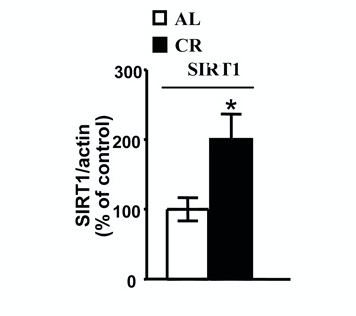Eating Less Reduces Plaque Buildup in Alzheimer’s Disease
Scientists provide evidence elucidating the cellular pathway by which calorie restriction reduces plaque buildup in Alzheimer’s disease.
An estimated 5.8 million people aged 65 and older in the US live with Alzheimer’s disease in 2020, and an estimated 13.8 million people will have Alzheimer’s dementia by 2050. In the medical field, 50 percent of physicians believe the society is not ready for the growing prevalence of this disease. Scientists have been searching for therapeutic options for the memory-impairing diseases since it was first described in 1906.
Scientists from the Mount Sinai School of Medicine in New York published a study in the Journal of Biological Chemistry which provided evidence for a cellular mechanism underlying the prevention of Alzheimer’s disease. They found reducing calorie intake through dietary restrictions promotes the activity of proteins called sirtuins which reduce the buildup of plaques in the brain of mice with the disease.
Sirtuins, also known as the “guardian of the genome,” are crucial in maintaining cellular health and they depend on nicotinamide adenine dinucleotide (NAD+) to function. However, NAD+ levels decline with age in organisms, possibly resulting in the decline of sirtuin function. In the study, the team of researchers found calorie restriction increased sirtuin activity and NAD+ levels in the brains of mice. After having the mice on a 6-month-diet, cutting their calorie intake by 30 percent, the researchers found an elevation of sirtuin protein content in their brain. In fact, following six months of caloric restriction, the mice had approximately twice as much sirtuin protein content in their brains than those that had a normal diet. Other measurements also showed a significant increase in NAD+ content in the brain.

Sirtuins and NAD+ Reduce Plaque Formation
Alzheimer’s disease is thought to be caused by the abnormal build-up of plaques — composed of protein components — in and around brain cells. The team discovered that higher sirtuin levels reduced the accumulation of one of the disease-causing protein components, Aβ peptides. Furthermore, they genetically modified neurons in petri dishes to increase the levels of sirtuin proteins about threefold and found significant reductions in the levels of Aβ peptides. Vice versa, genetically reducing the levels of sirtuin proteins leads to an increase in Aβ peptides levels.
Besides increasing sirtuin levels to reverse protein build-up in the brain, treating neurons with NAD+ can also achieve similar results. Increasing the concentration of NAD+ used to treat neurons resulted in progressive reductions in levels of Aβ peptides. The researchers wrote that therapeutics that target sirtuins or NAD+ offers an “attractive novel pharmacological directions for future [Alzheimer’s disease] treatment.”

The scientists also noted that their study links increased NAD+ levels and increased sirtuin protein activity with the prevention of Alzheimer’s plaque buildup in the brains of mice that underwent dietary restriction. For the first time, their study suggested a role of this sirtuin activation and enhancement of NAD+ levels as a cellular mechanism that can beneficially influence Alzheimer’s disease-related pathology in the brain.

